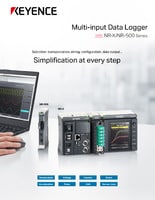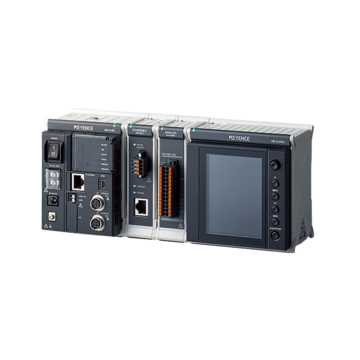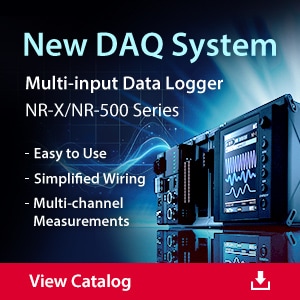Data Acquisition (DAQ)
Pulse Parameters Measurement for DAQ Instruments
-
Tags:
- Pulse
Pulse parameter measurement is an essential procedure in many applications that deliver modern conveniences. Electrical power meters, waste water systems, wind speed sensors, and HVAC equipment are some of the modern technologies that rely on pulse measurement application.
We’re here to provide you with more details.
Reach out today!

What is Pulse Measurement?
Key Pulse Parameters
Several parameters must be considered during pulse measurement to ensure accurate data collection, processing, and analysis. Below are five crucial parameters to consider. A measurement system should be flexible enough to modify any of these parameters for the best results.
- Measurement Filter Type: The choice of measurement filter depends on signal frequency, noise characteristics, and measurement goals. For example, a low-pass filter can remove high-frequency noise, while a high-pass filter can be used for low-frequency noise. The right filter choice would help preserve the quality of the pulse signal.
- Pulse Detection Threshold: Setting the correct minimum level or amplitude where a pulse can be detected and measured is crucial. This helps eliminate unwanted signals that could be picked or noise that may pass off as valid pulses, with all these leading to inaccurate detection.
- Minimum Off Time: Also referred to as MOT, Minimum Off Time is a crucial factor to consider in applications where pulse width is short and pulse frequency is high. Setting the correct MOT helps reduce errors, improves measurement accuracy, and enhances system reliability.
- Number of Pulses to Measure: In radar and sonar systems, for example, setting the right number of pulses to measure helps ensure an accurate representation of the signal and makes statistical analysis reliable. When deciding the quantity of pulses to be measured, consider the signal frequency, data storage, and processing capacity.
- Pulse Frequency: The number of pulses or cycles per unit of time. Frequency is usually measured in Hertz (Hz), cycles per second...
Pulse Width Definition
Pulse Width (PW) represents how long a pulse remains active or high. It is often used to characterize pulse shape duration and measure pulse width modulation.
The Basics of Pulse Units
Pulse units are used to express the magnitude of pulse signals. Some of these units are briefly described below.
- Volts: Measures voltage
- Amperes: Measures current
- Pascals: Measures pressure or the force per unit area
- Meters: Measures distance
- Seconds or Milliseconds: Measures the duration or interval between pulses
- Hertz: Measures the frequency of pulses
- Joules: Measures the total energy transferred or work done
Discover more about this product.
Click here to book your demo.

How DAQ Instruments Measure Pulses
Different DAQ systems are built for different applications. Some are designed to measure voltage, optics, pressure, and current.
One of the pulse measurement examples is found in wastewater treatment facilities. Data Acquisition equipment tools are used in treatment processes and leak detection.
In production sites where water is required for cooling, flow rate may need to be measured to prevent overheating and ensure efficient heat transfer. In this use case, a flow meter is typically installed on the target piping to measure how much fluid flows through the pipes. The meter generates and sends pulses (also called signals) to separate pulse measurement equipment. The equipment then converts the received pulses into a flow rate, which can then be used for further analysis.
KEYENCE offers a line of pulse measurement systems or Data Acquisition technology that can help measure pulses in a range of use cases. The NR-X Series, for instance, is a data logger that supports a variety of applications, including pulse measurement. It can be used with eight types of measurement units with multi-channel measurement using up to 576 channels.
Choosing the Right DAQ Instrument
When carrying out pulse parameters measurement, make sure the system can meet specific needs and deliver accurate, reliable data. Factors to consider include:
- Measurement Range: Ensure the range of signal amplitudes the instrument can handle is not too narrow or too broad. If it’s too broad, the resolution may be insufficient while the signal may saturate the input if too low or narrow.
- Resolution: Higher resolution offers detailed information and accurate pulse signal representation.
- Sampling Rate: The frequency at which the DAQ system can measure and record signals must be sufficiently high. This would ensure accurate signal representation.
- Input Type: The DAQ system must be able to accept the required input, be it current, voltage, etc. Some systems can accept different signal inputs.
- Compatibility with Sensors and Systems: Ensure the Data Acquisition tool can work or be integrated with existing sensors and systems. This will guarantee smooth measurement.
Carefully evaluating these factors before a pulse parameter measurement can help you choose the right equipment.
Want to learn more about KEYENCE’s Data Acquisition sensors? Contact us today for more information.
Contact us to learn more about how our advanced technology can help take your business to the next level.
Contact Us



